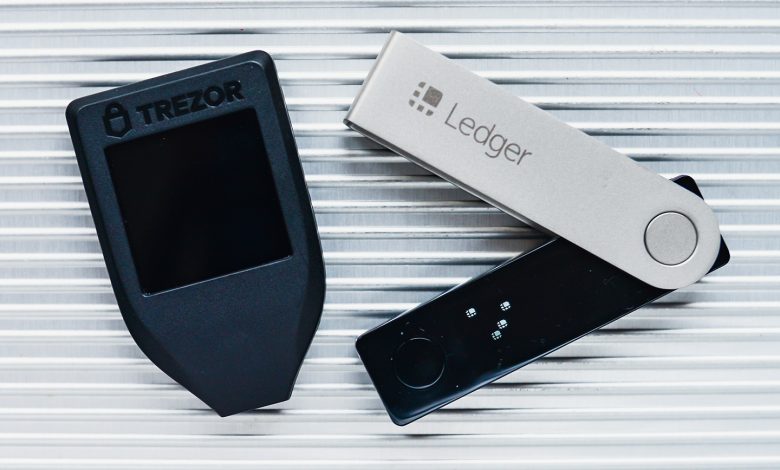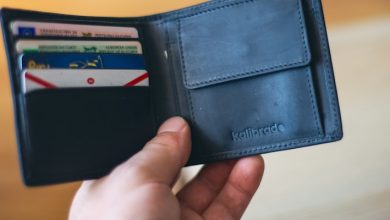How to Use Hardware Wallets Safely

- Understanding the importance of hardware wallets in securing your cryptocurrency
- Choosing the right hardware wallet for your needs
- Setting up your hardware wallet securely
- Best practices for storing and accessing your hardware wallet
- Protecting your hardware wallet from physical theft and damage
- Ensuring the security of your hardware wallet through regular maintenance
Understanding the importance of hardware wallets in securing your cryptocurrency
Understanding the significance of hardware wallets in safeguarding your digital assets is crucial in the world of cryptocurrency. Hardware wallets provide an extra layer of security by storing your private keys offline, making it nearly impossible for hackers to access your funds remotely. By keeping your keys offline, you are protecting your cryptocurrency from potential cyber threats and theft.
Hardware wallets are designed to be tamper-proof, meaning that even if someone gains physical access to your device, it is extremely difficult for them to extract your private keys. This added security feature gives you peace of mind knowing that your funds are safe and secure. Additionally, hardware wallets are user-friendly and easy to set up, making them accessible to both novice and experienced cryptocurrency users.
When it comes to securing your cryptocurrency, investing in a hardware wallet is a wise decision. While software wallets are convenient, they are more susceptible to hacking and malware attacks. Hardware wallets, on the other hand, offer a higher level of security that is essential for protecting your digital assets. By using a hardware wallet, you are taking proactive steps to safeguard your cryptocurrency investments.
Choosing the right hardware wallet for your needs
When it comes to selecting the appropriate hardware wallet for your specific requirements, there are several factors to consider. The first step is to determine which cryptocurrencies you plan to store on the wallet. Not all hardware wallets support the same range of cryptocurrencies, so it is essential to choose one that is compatible with the assets you own.
Another crucial consideration is the security features offered by the hardware wallet. Look for wallets that provide robust encryption, two-factor authentication, and secure PIN protection. Additionally, consider whether the wallet has a secure element chip for added security.
Ease of use is also an important factor to keep in mind when selecting a hardware wallet. Look for a wallet that has a user-friendly interface and clear instructions for setting up and using the device. Some wallets even offer companion apps that make it easier to manage your assets on the go.
Finally, consider the reputation of the hardware wallet manufacturer. Look for companies with a track record of producing high-quality, secure devices. Reading reviews from other users can also provide valuable insights into the reliability and performance of a particular hardware wallet.
By taking these factors into account, you can choose a hardware wallet that meets your needs and provides the security and peace of mind you need to store your cryptocurrencies safely.
Setting up your hardware wallet securely
To **set up** your **hardware wallet** securely, follow these steps:
1. **Choose** a **secure** location: **Select** a **safe** and **private** location to **set up** your **hardware wallet**. **Avoid** using **public** Wi-Fi networks or **shared** computers to **prevent** unauthorized access to your **wallet**.
2. **Follow** the **manufacturer’s** instructions: **Carefully** read the **manufacturer’s** instructions that come with your **hardware wallet**. **Follow** the **step-by-step** guide to **set up** your **wallet** correctly.
3. **Create** a **strong** PIN: **Choose** a **PIN** that is **difficult** to **guess** but **easy** for you to **remember**. **Avoid** using **obvious** combinations such as **1234** or **0000**.
4. **Backup** your **recovery** phrase: **Write** down your **recovery** phrase on a **piece** of **paper** and **store** it in a **secure** place. **Do not** **share** this **phrase** with anyone to **protect** your **funds**.
5. **Enable** additional **security** features: **Take** advantage of any **additional** **security** features offered by your **hardware wallet**, such as **two-factor** authentication or **multi-signature** support.
By **following** these **steps**, you can **set up** your **hardware wallet** securely and **protect** your **cryptocurrency** **assets** from **unauthorized** access.
Best practices for storing and accessing your hardware wallet
When it comes to storing and accessing your hardware wallet, there are several best practices to keep in mind to ensure the security of your cryptocurrency assets. Here are some tips to help you safely store and access your hardware wallet:
- Store your hardware wallet in a secure location, such as a safe or a safety deposit box, to protect it from theft or damage.
- Make sure to keep your recovery seed phrase in a separate and secure location, such as a safe deposit box or a fireproof safe, to prevent unauthorized access.
- When accessing your hardware wallet, make sure to use a secure and trusted computer or mobile device to minimize the risk of malware or hacking.
- Always double-check the URL of the wallet interface before entering any sensitive information to avoid phishing scams.
- Regularly update the firmware and software of your hardware wallet to ensure that you have the latest security features and bug fixes.
By following these best practices, you can help protect your cryptocurrency assets and minimize the risk of unauthorized access to your hardware wallet.
Protecting your hardware wallet from physical theft and damage
When it comes to protecting your hardware wallet from physical theft and damage, there are several precautions you can take to ensure the security of your cryptocurrency investments. Here are some tips to help you keep your hardware wallet safe:
- Store your hardware wallet in a secure location: Keep your hardware wallet in a safe place, such as a locked drawer or safe, when you are not using it. Avoid leaving it out in the open where it can be easily taken.
- Use a strong and unique PIN: Set up a strong PIN code for your hardware wallet that is not easy to guess. Avoid using common numbers like “1234” or your birthdate.
- Backup your recovery seed: Write down your recovery seed on a piece of paper and store it in a separate location from your hardware wallet. This will allow you to recover your funds if your wallet is lost or damaged.
- Avoid sharing your recovery seed: Do not share your recovery seed with anyone else, as this could compromise the security of your wallet. Keep it private and secure.
- Consider using a passphrase: Some hardware wallets offer the option to set up a passphrase in addition to your PIN code. This provides an extra layer of security in case your wallet is stolen.
By following these tips, you can help protect your hardware wallet from physical theft and damage, ensuring that your cryptocurrency investments remain safe and secure.
Ensuring the security of your hardware wallet through regular maintenance
Regular maintenance of your hardware wallet is crucial to ensure its security and longevity. By following a few simple steps, you can keep your device in top condition and protect your valuable assets.
Firstly, it is essential to regularly update the firmware of your hardware wallet. Manufacturers often release updates to address security vulnerabilities and improve overall performance. By staying up to date with the latest firmware version, you can minimize the risk of potential threats and ensure that your wallet remains secure.
In addition to firmware updates, you should also regularly check for any physical damage or signs of tampering on your hardware wallet. Inspect the device for any unusual marks, scratches, or changes in appearance that could indicate a security breach. If you notice anything suspicious, contact the manufacturer immediately and refrain from using the wallet until the issue is resolved.
Furthermore, it is recommended to periodically back up your wallet’s recovery seed or passphrase. This backup is essential in case your hardware wallet is lost, stolen, or damaged. By storing this information in a secure location separate from your device, you can easily recover your funds and restore access to your accounts in the event of an emergency.
By following these simple maintenance tips, you can ensure the security of your hardware wallet and protect your cryptocurrency investments. Remember that prevention is key when it comes to safeguarding your assets, so make regular maintenance a priority to enjoy peace of mind knowing that your funds are safe and secure.



